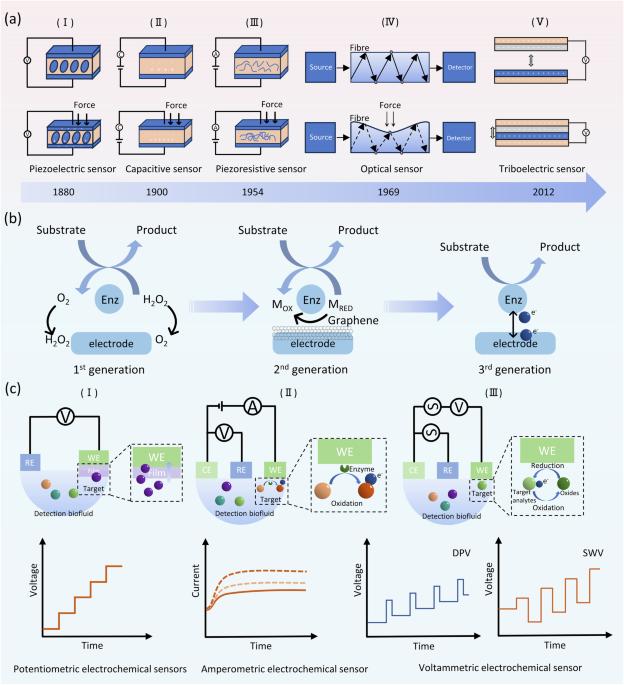用于实时健康监测的可穿戴机械和电化学传感器
IF 9.6
Q1 MATERIALS SCIENCE, MULTIDISCIPLINARY
引用次数: 0
摘要
近年来,可穿戴传感器在微型化、灵活性、低功耗和智能化方面取得了长足进步,为实时监测人体健康状况提供了良好的解决方案。在此,我们将介绍可穿戴传感器的原理及其在疾病监测中的应用。生理信号主要包括物理信号和生化信号。在用于监测生理信号的各种传感器中,我们介绍了机械传感器和电化学传感器的基本工作原理。我们总结了传感器与日常可穿戴产品巧妙结合的实例,并介绍了应用于呼吸系统、心血管系统、神经系统、肌肉骨骼系统和代谢系统的疾病监测案例。针对可穿戴传感器在材料、结构、技术和能源等方面的现状,探讨了可穿戴机械传感器和电化学传感器面临的挑战和解决方案,展望了可穿戴传感器的应用前景。可穿戴传感器可将传感器融入我们的日常生活,从而加快个性化医疗的发展。本视角将讨论机械和电化学传感器,包括其工作原理、设备合成以及在监测疾病、心血管、神经和肌肉骨骼系统中的应用实例。本文章由计算机程序翻译,如有差异,请以英文原文为准。

Wearable mechanical and electrochemical sensors for real-time health monitoring
Wearable sensors provide a good solution for real-time monitoring of human health, and great progress has been made in miniaturization, flexibility, low power consumption and intelligence in recent years. Here, we introduce the principles of wearable sensors and their applications in disease surveillance. Physiological signals mainly include physical signals and biochemical signals. Among various sensors used to monitor physiological signals, we have introduced the basic working principles of mechanical sensors and electrochemical sensors. We summarize the examples of the clever integration of sensors with daily wearable products, and introduce cases of disease monitoring applied to the respiratory system, cardiovascular system, nervous system, musculoskeletal system and metabolic system. In view of the current situation of wearable sensors in terms of materials, structure, technology and energy, we discuss challenges and solutions of wearable mechanical and electrochemical sensors, and look forward to the application prospects of wearable sensors. Wearable sensors can expedite personalized medicine by integrating sensors into our daily lives. This Perspective discusses mechanical and electrochemical sensors, including their operating principles, device synthesis, and examples of their use in monitoring disease, and cardiovascular, nervous and musculoskeletal systems
求助全文
通过发布文献求助,成功后即可免费获取论文全文。
去求助
来源期刊

Communications Materials
MATERIALS SCIENCE, MULTIDISCIPLINARY-
CiteScore
12.10
自引率
1.30%
发文量
85
审稿时长
17 weeks
期刊介绍:
Communications Materials, a selective open access journal within Nature Portfolio, is dedicated to publishing top-tier research, reviews, and commentary across all facets of materials science. The journal showcases significant advancements in specialized research areas, encompassing both fundamental and applied studies. Serving as an open access option for materials sciences, Communications Materials applies less stringent criteria for impact and significance compared to Nature-branded journals, including Nature Communications.
 求助内容:
求助内容: 应助结果提醒方式:
应助结果提醒方式:


